Three key areas England need to fix for World Cup knockouts

England have successfully navigated their way through another tournament group under Gareth Southgate, and despite quibbles over selection and performance they never looked in danger of elimination.
Their swift, free-flowing attacking moves proved too much for Iran, things stalled against an intense USA side before England swatted aside Wales in second gear.
The tests become far stiffer now with a last-16 tie against Africa Cup of Nations holders Senegal on Sunday and a potential quarter-final against World Cup holders France.
Southgate and his staff will be delighted with England's progression to the knockout stages, but there have been enough clunky periods for them to analyse and school the players on the training pitch.
Here are some of things England can improve upon if they are to go all the way in Qatar.
Feeding the ball into Rice
This is not as easy as it sounds. Passes through the centre of the pitch are riskier than those played out wide, and losing the ball in the middle of your defensive third will likely result in a high-quality chance for the opposition.
Opponents will also set up to prevent passes being played into central midfield, with USA and Wales both pressing in a 4-4-2 shape out of possession. The two strikers threatened to press John Stones and Harry Maguire, but one of their key responsibilities was to shadow Declan Rice and block the lane into him.
After the USA game, Southgate said he was delighted with Stones and Maguire's play with the ball, analysis which bemused many observers who felt they were too safe and lateral. This comment revealed what we already know: England's manager wants his team to minimise risks, and to avoid trying to force passes through crowded areas which could result in a gift.
Nevertheless, it does feel like England have more scope for central progression. We could have picked numerous examples from the first halves against USA and Wales of England turning away from avenues to give their deepest midfielder the ball.
In the opening few minutes, Rice has moved outside of Wales' front two of Aaron Ramsey and Kieffer Moore and Stones has the ball on his stronger right foot. Rice had space to receive the ball and push his first touch to the right – the 'safe side' – but Stones elected to turn back to Maguire.

In this case, Maguire does play the vertical pass into Rice who is outside the line of Ramsey, but this time on the left. Joe Allen was occupied by Jude Bellingham higher up, so there was ample space for Rice to let the ball run across his body and carry it forward, and he would have had the power to hold off any Ramsey challenge. Instead, he plays the way he is facing and goes back to Maguire.
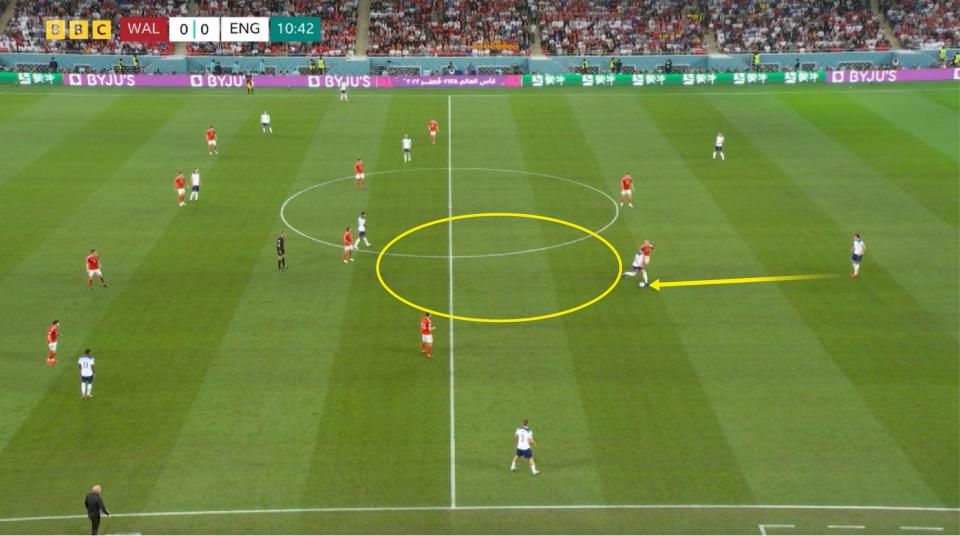
In this move, Wales and Ramsey have done exactly what Rob Page would have asked and shadowed the pass from Maguire to Rice and forced England to go back to Pickford.
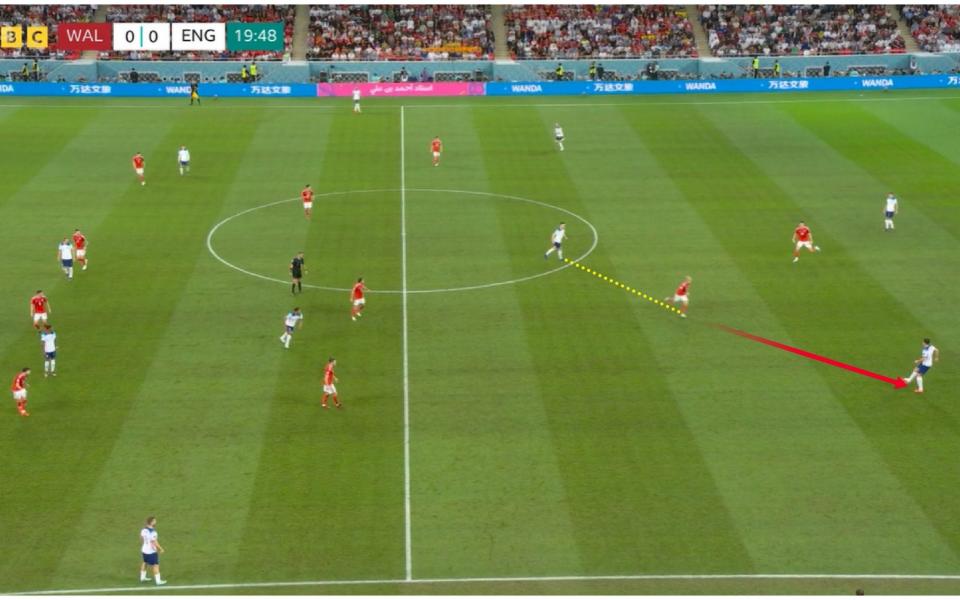
Even so, once England have the ball back with Pickford they outnumber Wales four to two and there is potentially a passing lane between the forwards from Pickford to Rice (a risk yes, but one we regularly see the best teams and goalkeepers take). Pickford puts his hand up to signal he is turning the pass down. England could have tried to work an extra pass through the centre-backs to Rice, but Pickford kicked long and a scrappy period of head tennis and 50:50 contests ensued.
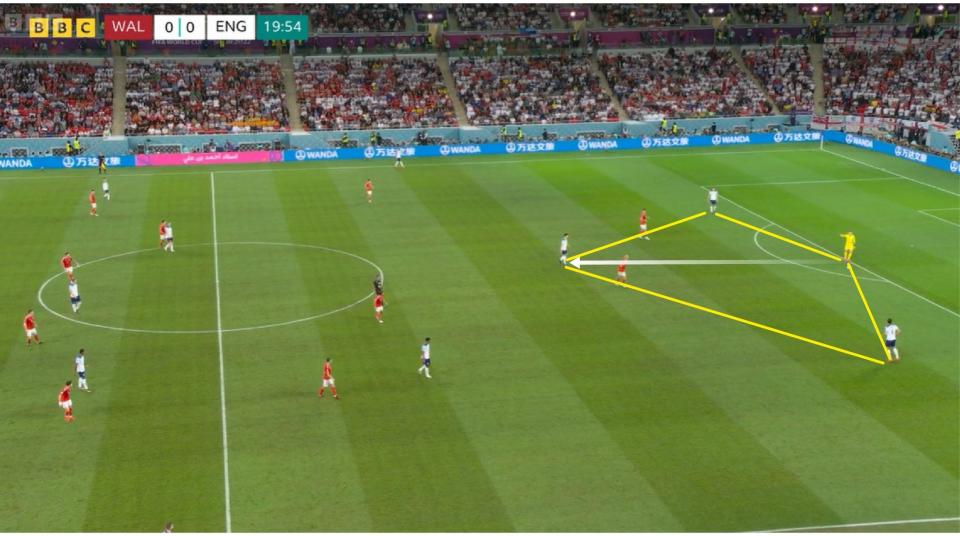
When England had the freedom of the park against Iran, Stones found Rice 16 times and Maguire found him seven times. This decreased to 11 Stones passes and five Maguire passes against the USA. Against Wales, Maguire found Rice more frequently with seven passes to Stones' four (it should be said Rice was brought off for a rest after 58 minutes).
All of these passes are easier to make when re-watching and pausing a game the morning after of course, and Southgate would stress the importance of avoiding mistakes in low-scoring knockout football. Nevertheless, for all Jude Bellingham and Declan Rice's dynamism, it still feels like England's midfield is missing some control and presence in the first-phase of their build up.
Get Kane firing
The fact England's captain is yet to score at the tournament is either hugely exciting or a cause for concern. Does it suggest England, who have already scored nine goals in Qatar, have another attacking gear to find or will it catch up with them?
At the age of 29 and after his 78th England cap, Kane is the player he is: a world-class striker of the calibre most nations at the World Cup would sell the family silver to possess. His output speaks for itself.
We also know that Kane is less of a threat running in behind defences than he once was, especially if he is nursing an ankle whack sustained against Iran. He likes to come short, and either buy fouls or use his excellent vision and weight of pass to play in runners. His chances tend to come from crosses or cut-backs in the second phase of the attack.
Kane is contributing, with superb delivery from the right setting up Phil Foden against Wales and Raheem Sterling against Iran.
He is struggling to be a penalty-box threat from open play though, with a blocked shot set up by a Bukayo Saka pull-back against USA his only serious goalscoring opportunity. Kane has managed just three shots from open play in England's three matches. This is a player who has averaged more than three shots per 90 minutes in the Premier League in each of the last three seasons.
According to Opta data, Kane managed just five touches inside the penalty area in England's three group games.
Kane's touches against USA, attacking from left to right
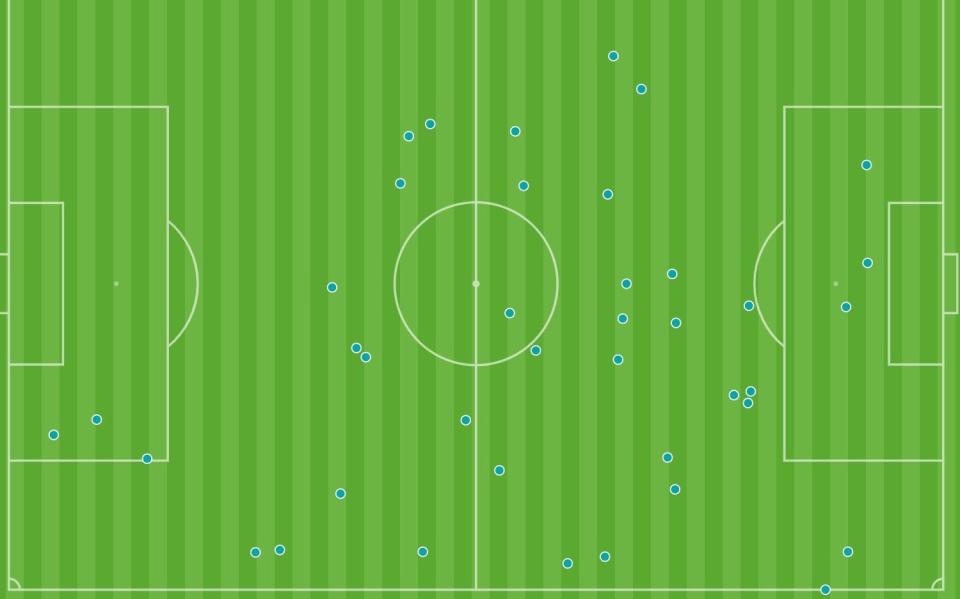
France won the World Cup in 2018 without Olivier Giroud having a shot on target, and their centre-forward Stéphane Guivarc'h played six games in 1998 without scoring. Kane is better than those players though, and a more totemic figure in his team. England need Kane taking more shots from closer to goal to fulfil their potential. Perhaps Marcus Rashford blossoming as a support forward will help Kane's cause.
A valid defence of Kane's form is that the likes of Saka, Foden and Rashford would not be able to thrive on the extremities of the team without a fulcrum occupying defenders and being a reference point.
Defending in full-back areas
It was interesting that Southgate decided to pair club team-mates on the flanks against Wales: Kyle Walker and Foden on the right, and Luke Shaw and Marcus Rashford down the left (though the wingers later swapped).
Against USA, the defensive distances between winger and full-back were a problem for England, allowing Antonee Robinson and Sergino Dest to exit down the sides under no pressure. Kieran Trippier and Bukayo Saka appeared to lack understanding, with Trippier not squeezing up when the Arsenal man went to press, or Saka not dropping off into shape when his right-back was occupied.
One other thing to keep an eye on is England's shape when building play. Against a limp Wales team sent out to contain, on several occasions they built with their back four fanned out, with both full-backs wide and close to the touchline. This could have been a tactic to try and stretch out Wales' passive 4-4-2 shape. With two of the midfield three pushed high in the pockets, it leaves the half-spaces free for the opposition to counter-attack into if the ball is turned over (positively cavalier from Southgate!). These are the spaces Senegal's Ismaila Sarr will be eyeing up.
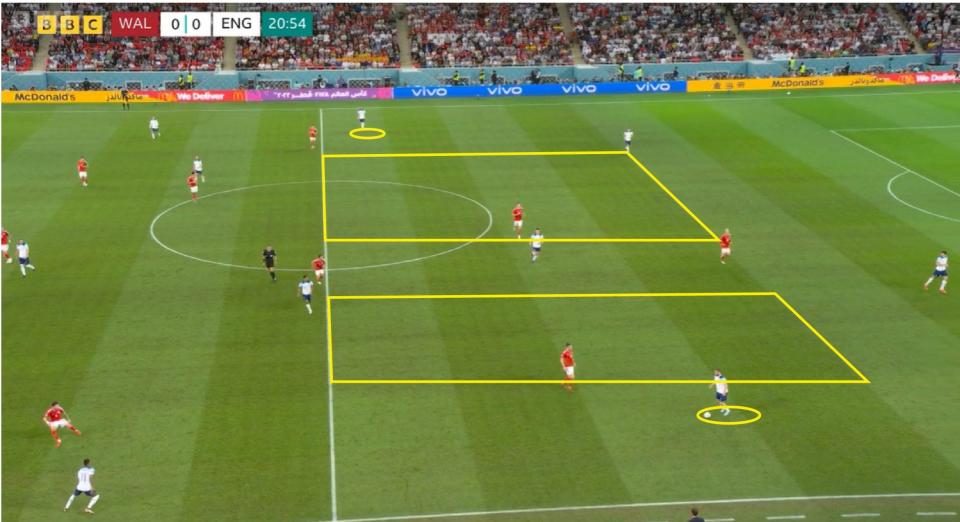
England's full-backs either need to make sure their recovery runs are diagonal to contract into this central space, or adopt a more narrow position in the build-up to protect against the counter. The return to fitness of Walker can help on both counts, with the Manchester City right-back inverting on occasion against Wales.
More likely is that we see more of England building with Walker on the right of a back three against more potent opposition in the knockout stages.

 Yahoo Sport
Yahoo Sport 





































